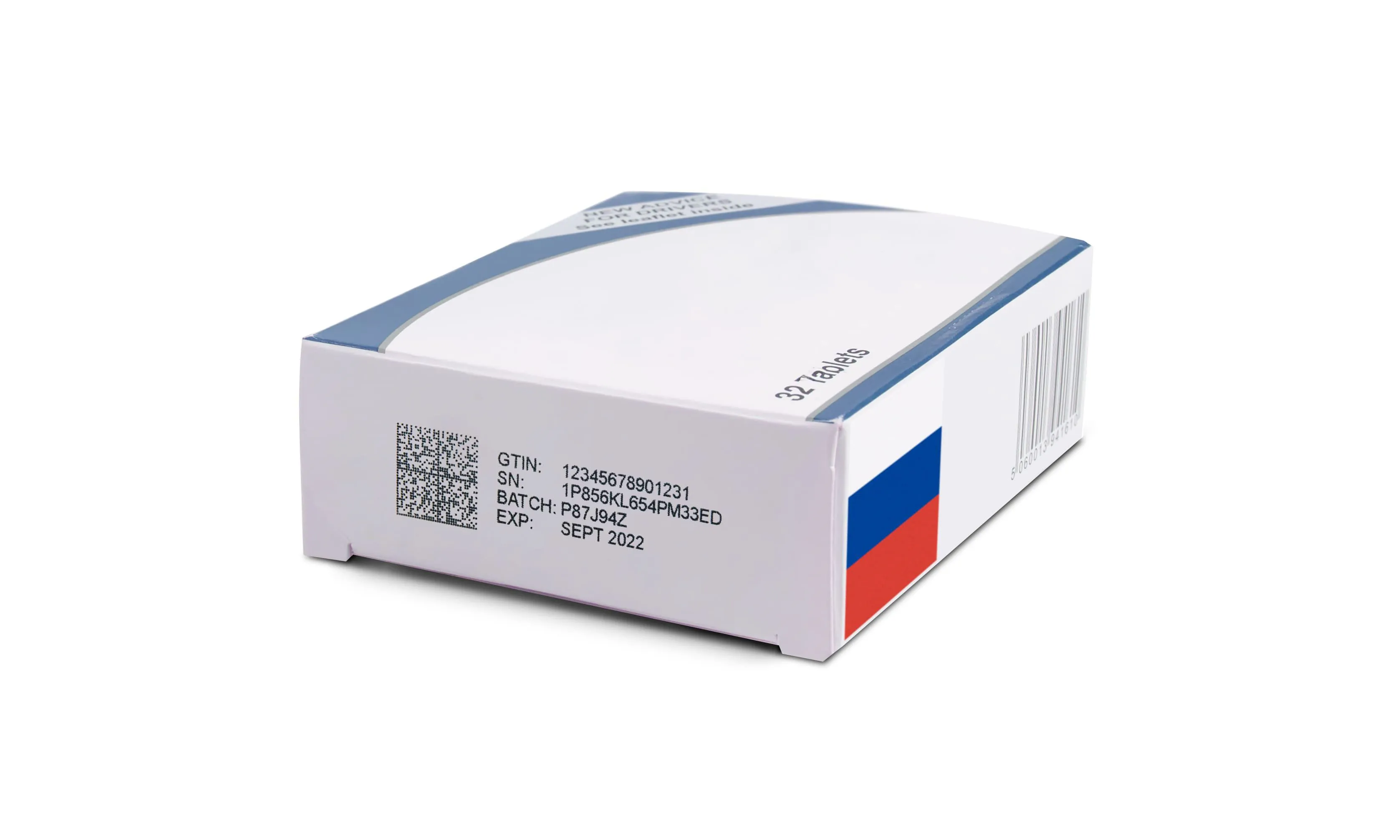Gx-Series optimises TIJ printing for Chestny ZNAK crypto code compliance.
Domino Printing Sciences (Domino) is helping its pharmaceutical industry customers reduce waste and improve compliance with Russia's Chestny ZNAK crypto code legislation, through optimisation to its high-speed Gx-Series thermal Inkjet (TIJ) printers.
Gx-Series printers allow individual barcode or pixel shaving within 2D codes for high-grade printing of larger size Data Matrix barcodes, to help to ensure manufacturers are compliant with the new Russian crypto code legislation, Chestny ZNAK.
“The Russian crypto code poses a challenge for pharmaceutical manufacturers, who are faced with the need to include more data within a Data Matrix code, without impacting line speed. To do this requires an exceptional quality printer,” says Bart Vansteenkiste, Global Life Sciences Sector Business Development Manager, Domino.
“Our Gx-Series will enable higher grade printing of crypto codes, at the high speeds expected from a TIJ printer – this will help our customers to maintain production performance, while avoiding the risk of having codes, and therefore products, rejected for sale.”
Under the recent legislation, Russia’s internal regulation commission, Center for Research in Perspective Technologies (CRPT), mandated new serialisation requirements for pharmaceuticals, including over-the-counter (OTC) medicines, and various other products such as tobacco and perfumes.
Designed to facilitate track and trace and protect consumers from counterfeit products, the new regulations place additional demands on the attributes contained within Data Matrix codes. Specifically, the crypto code imposes a 64-bit encryption, 44 alpha-numeric character demand, nearly doubling the capacity of the Data Matrix – and thereby requiring high-contrast print capabilities.

The high-speed nature of TIJ printing makes it the preferred choice for pharmaceutical manufacturers creating Data Matrix codes, over alternatives such as laser and thermal transfer overprinting (TTO). With Domino’s Gx-Series, manufacturers will be able to achieve fast-paced, high-quality printing of crypto codes at grade B or above.
“Under the Chestny ZNAK legislation, manufacturers are required to achieve Data Matrix printing at grade C or above,” continues Vansteenkiste. “However, relying on a grade C rating leaves no margin for error. This is why we have optimised our Gx-Series to achieve grade B or above, to ensure a product that is compliant with the Russian legislation and accepted for sale, while reducing the risk of rejects.”
It is expected that by 2024, the Russian track and trace system will cover all industries, from cigarettes and medications to clothing and child nutrition. This means that all manufacturers within the country, producing products for sale at home, and all those outside of Russia manufacturing items for sale within the country will need to be compliant.
“Serialisation is becoming more standard across the world and in different sectors,” continues Vansteenkiste. “There is an expectation that other countries may choose to follow in the footsteps of the Russian legislation and introduce a requirement for a larger size Data Matrix code for product serialisation and track and trace.”
All Gx-Series printers are now automatically optimised for high-grade printing of larger size Data Matrix codes, allowing customers to take advantage of the capability as and when required.
“Domino is committed to helping manufacturers be sustainable, cut waste, and increase yields while ensuring compliance with legislation to protect consumers,” says Craig Stobie, Director Global Strategic Sectors, Domino. “By recognising the difficulty in printing larger-size 2D codes and developing a solution to meet this requirement we are helping our customers to be compliant with the Chestny ZNAK and other new and upcoming legislation.”
“Our identification coding solutions provide extensive supply chain validation and control, from protecting the consumer against counterfeit products, including pharmaceuticals, to supporting the UNSDG goal of ‘ensuring healthy lives and promoting well-being,” concludes Stobie.
You can find out more about Domino’s solutions for pharmaceuticals here.